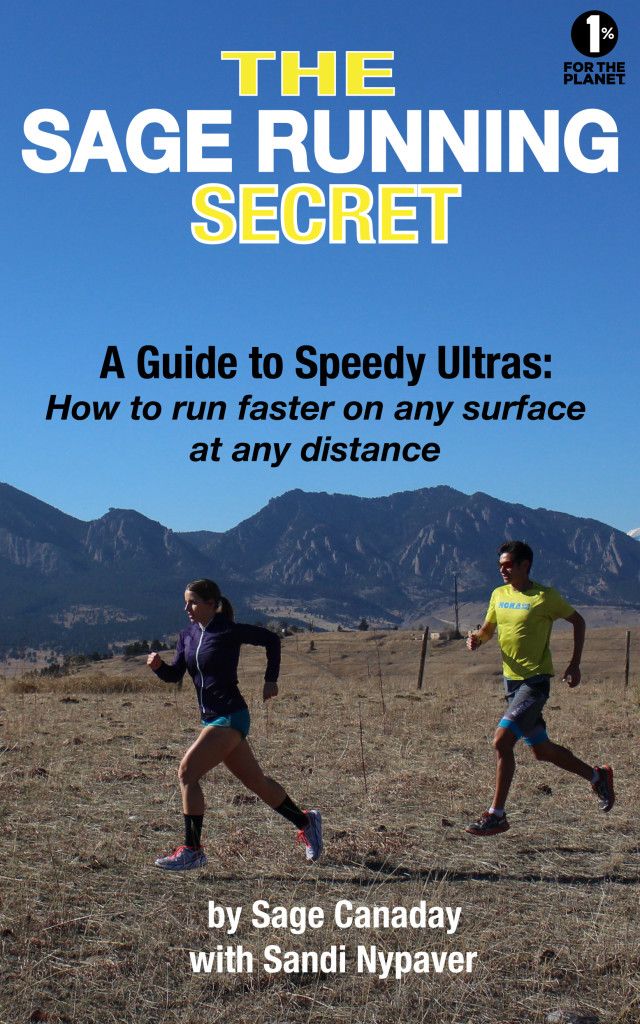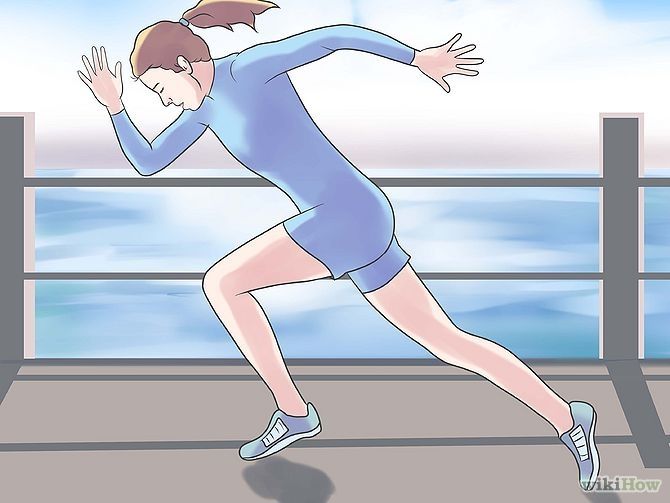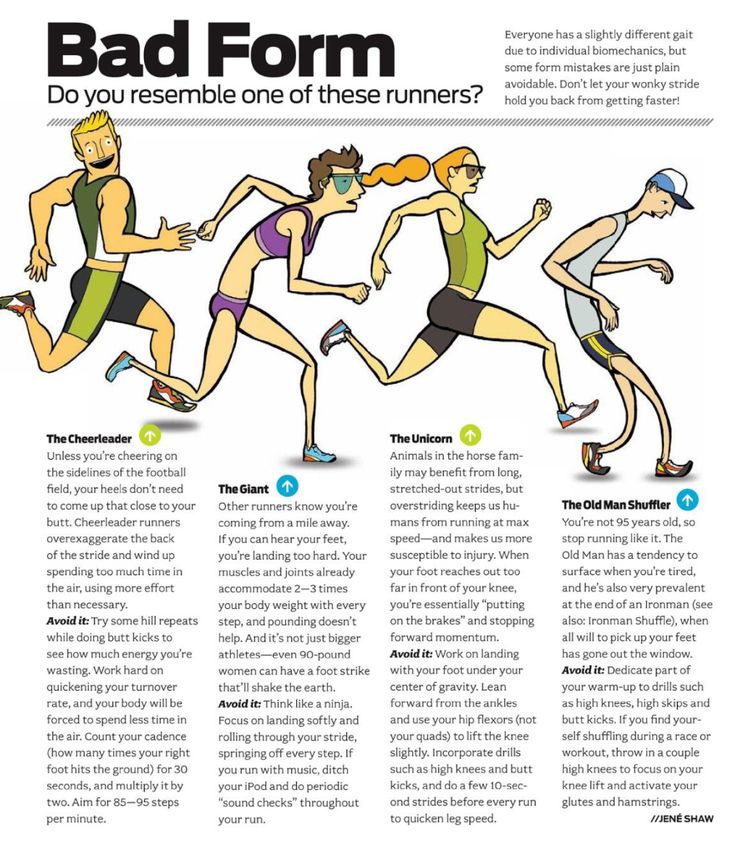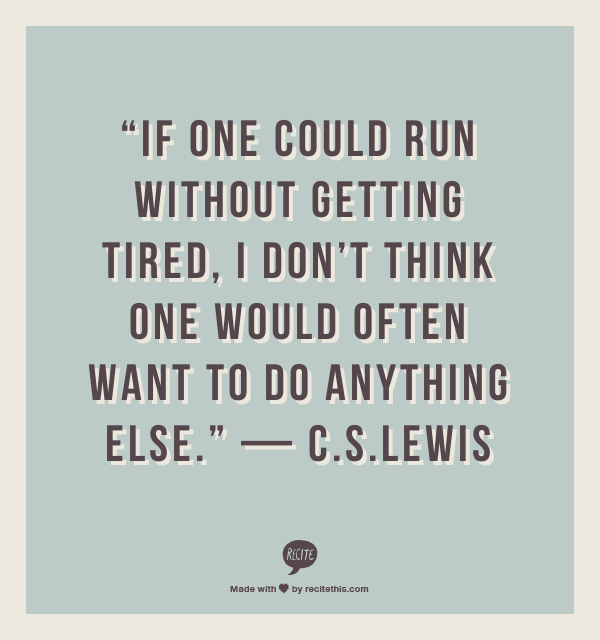Find out what’s causing you to feel fatigued a mile into your run, then, learn helpful tips on how you can boost both your physical and mental stamina.
Last updated: April 27, 2022
6 min read
Many runners experience fatigue during a run. But what if that fatigue prevents them from completing the run without stopping, or at all? Feeling tired during a workout is a key sign that you need to improve your cardiovascular endurance. More than that, it’s an indicator you need to work on your mental stamina and how you’re preparing for your run.
It’s easy to assume that if you can’t run without getting tired, you’re unfit. But in reality, there are many more components that contribute to the feeling of fatigue that crops up during physical activity for a runner.
As a runner, you want to run long distances without experiencing exhaustion, or needing to take walk breaks every five minutes. So it’s time to work on your cardio!
Cardiovascular fitness refers to how efficiently your cardiovascular system can transport oxygenated blood around your body to your working muscles. Cardiorespiratory endurance refers to how long you can sustain this during physical activity, before you get tired.
At a very basic level, a runner with good cardio can run for longer. It means their heart, lungs, muscles, and blood vessels are healthy and efficient.
The best way to improve your cardiorespiratory endurance is to run as regularly as you can. How many times a week should you run? You don’t want to run every day because recovery is vital. You need to give your cardio system the chance to adapt as part of your training plan.
Endurance is a marker of how long you can sustain exercise. To improve your endurance, you’ve got to push yourself into some long runs. If you’re only sticking to short one-mile runs, your body isn’t placed under any new stress, and it won’t learn to adapt to a higher output.
Incorporate at least one long run per week. Test yourself with long distances — it’s okay to take walk breaks! The goal is to try and delay them as much as you can and to lengthen the running period each time, until you can run the distance non-stop.
Tip: A helpful way for runners to monitor their tiredness is to take a mental note of the rate of perceived exertion (RPE). The RPE scale is used to self-measure the intensity of your workout. If you have a high heart rate, are short of breath and unable to keep going, you can expect your RPE to be at a nine or 10 (out of 10). This is reflective of high-intensity exercise. When you reach this, try decreasing your speed or walking until your RPE comes back down to a five or six. This type of interval training is an effective way to increase endurance and run for longer during your workout, from start to finish.
Stamina is a term often used interchangeably with endurance. But there are a few key differences between the terms. Endurance specifically relates to physical fitness, whereas stamina also encompasses mental fitness. It’s not just how long your body can work for, it’s how long your mind can.
But there are a few key differences between the terms. Endurance specifically relates to physical fitness, whereas stamina also encompasses mental fitness. It’s not just how long your body can work for, it’s how long your mind can.
You may be feeling mentally tired soon into your run, but your body can handle it. For beginner runners, or people who struggle to enjoy running, it’s easy to let your mind take over and give up early in your run.
To move beyond a mental running block and push through it, follow these tips:
It's a good idea to make a motivating music playlist to listen to while running that includes all your favorite upbeat songs. If you start listening to slow-paced music, your own pace may reflect the beat. Instead, listen to music with a tempo of 120 to 140 beats per minute. This will keep you energized and motivated as you run mile after mile.
It’s easy to get tired when your focus is centered around how hard your run is. Distract yourself by setting a goal of reaching a landmark in the distance, or think about something else — the book you’re reading, your work day, your weekend plans? Redirect your focus from the distance and the miles to something fun and a better pace will follow.
Think of your motivation. Maybe you want to perform better in the gym, lose weight, or just feel more confident in life. Let this be your incentive to keep going the distance and keep your pace consistent.
Running is taxing on the body and mind. It’s not something you should go into if you’re dehydrated, sleep-deprived, hungry, or improperly prepared physically. But yet so many runners do, and then they wonder why they’re hit with exhaustion a mile into their run or their pace suffers.
Consuming a carbohydrate-rich meal prior to your run can help to counteract the glycogen depletion that happens when you run long distances. Glycogen is stored carbohydrates, the body’s main fuel source used during a run. If you start a run in a glycogen depleted state, your body won’t have enough energy to sustain activity as the miles go by.
Any experienced runner knows that the night before a big morning run, or for lunch before an evening run, it’s time to carb-load! Consume a high-carb meal such as rice, pasta, or potatoes and you'll be able to run longer.
A review published by the Journal of Sport and Health Science in 2015 found that dehydration can lead to significant reductions in physical performance. Before your run, make sure you are adequately hydrated. This will prevent you from getting a cramp and reduce hydration-related tiredness.
During and after your run, pay extra attention to replenishing electrolyte levels. As per a study published in Nutrition, “endurance athletes should drink beverages containing carbohydrate and electrolyte during and after training.” The researchers go on to mention that athletes rarely replace fluids lost in sweat, but it’s a must for optimal performance and speed.
When your heart rate increases, so does your breathing rate. But fast, shallow breaths cause the body to offload more carbon dioxide. This makes it harder to oxygenate our cells. As a result, your muscles cramp, you might get a side stitch, and you start to feel exhausted. How you breathe can really affect your workout.
Instead, try nasal breathing. Take a deep breath through your nose for two counts, and exhale through your nose for two counts. This steadies your breathing rate to ensure an optimal intake of oxygen.
Avoid running without a warm-up first. Performing some dynamic stretches and low-intensity aerobic exercise for five to 15 minutes before a run can help to reduce injury risk by warming up your muscles. Factor each warm-up into your training plan to avoid running out of time or coming up with excuses. And then, look forward to faster runs, whether you're going just a few miles of prepping for a half marathon. Don't forget to cool down by walking.
Performing some dynamic stretches and low-intensity aerobic exercise for five to 15 minutes before a run can help to reduce injury risk by warming up your muscles. Factor each warm-up into your training plan to avoid running out of time or coming up with excuses. And then, look forward to faster runs, whether you're going just a few miles of prepping for a half marathon. Don't forget to cool down by walking.
For more expert-driven tips, be sure to download the Nike Run Club (NRC) app!
Download
5 Running Shoe Lacing Techniques for a Better Run
Selecting the Right Running Shoes for Supination
Is Jumping Rope Better than Running?
The Best Nike Trail Running Shoes
10 Trainer-approved Warm-up Exercises for Leg Day
Share
503 shares
Endurance and stamina are incredibly important for runners.
The ability to run for longer without getting so tired is an important skill to master.
It pays off to be patient and consistent when it comes to training for longer distances.
Whether you’re building up to a 5k, 10k, half marathon or marathon, the key is to gradually build up the time and distance in which you can comfortably run without getting tired or out of breath.
Likewise, if you’re new to running, then you may be thinking how you can run for longer without getting so tired.
It may seem an unachievable goal right now, but with the right mindset, training and practice, you will get there.
Whatever stage you’re at, this guide will offer actionable tips to help you run for longer without getting so tired.
In this guide, we’ll explore:
Ready?
Let’s go!
You may be asking yourself: “Why do I get tired so easily on runs?”
It’s common to experience short periods of tiredness and fatigue when running and in between runs, especially after a long or demanding run.
You may struggle to breath when running, or you may have that heavy legs feeling on a run.
Here are some common causes of tiredness and fatigue:
#1 Lack of sleep
A healthy sleep routine will go a long way to help you feel more refreshed not only on a run, but in your daily life.
According to a 2017 study, chronic sleep deprivation has been shown to increase the risk of a host of physical and mental illnesses.
The study added that sleep deprivation costs the healthcare system billions of dollars annually.
Aim to get between 6 to 8 hours of sleep per night and practice good sleep hygiene.
#2 Lack of adequate recovery time in between runs
Overtraining is a common problem in the running community.
Overtraining boils down to ineffective recovery in between runs on a repeated basis.
So if you’re currently going through an unexplained dip in performance, or you regularly feel tired and fatigued on your runs, you may be experiencing Overtraining Syndrome (OS).
The important thing is to recognise the signs and symptoms of Overtraining Syndrome before it gets any worse.
#3 Insufficient fuel intake
Food and nutrition play an integral role in all forms of exercise, not just running.
You can think of your body as an engine – simply put if you don’t give it the right type of fuel and the right amounts of fuel, it won’t be able to perform at a high level.
Aim to get the right amounts of carbohydrates, protein, healthy fats and vitamins and minerals in your diet.
#4 Poor nutrition
If you’re used to eating processed foods and consuming sugary drinks and you regularly feel fatigued on your runs, then it’s a sign you need to review your eating habits.
Poor nutrition is a common cause of tiredness and fatigue.
Aim to eat a healthy, balanced diet that supports the needs of your body.
#5 Stress and anxiety
Whilst exercise like running has been shown to improve your mood and ease symptoms of stress and anxiety, poor mental health can have a negative affect on athletic performance.
People with anxiety tend to be more sedentary and do less intense forms of physical exercise, if any.
#6 Hormone imbalance
According to a study on the role hormones in exercise physiology, excessive or inadequate levels of several hormones place constraints on exercise performance.
Various studies have shown the importance of hormones and the endocrine system when it comes to exercise capability.
If you have dysfunctions in your thyroid, adrenal and pituitary glands, for example, this may induce specific disorders of the neuromuscular system which could lead to tiredness and fatigue.
If in doubt, speak to your healthcare professional.
#7 Iron deficiency
If you regularly experience periods of tiredness and fatigue, then seek help from a healthcare professional as it could be down to an underlying cause such as an iron deficiency.
Many tests can be performed nowadays to identify underlying causes of tiredness and fatigue, with blood tests being one of them.
Related: 6 tips for successfully running with a chronic illness
#1 Build your endurance and stamina
In order to run for longer without getting so tired, you need to build up your running endurance and stamina.
The golden rule to increase running stamina and endurance is consistency.
This means making running a regular habit and training consistently and progressing at regular intervals.
By training consistently, you increase your aerobic capacity (also known as your VO2 max or running economy) and strengthen your muscles.
In terms of progression, your mileage should increase by 5-10% each week to avoid training overload.
If you do all of these things, you can expect to see a improvement within 2 to 3 months.
Related: How to increase running stamina and endurance
#2 Increase your speed
Running speed is something that many runners look to improve once they have achieved a good base level of fitness.
Speed training like interval training and tempo running are a great way to build your speed, endurance and stamina.
According to a 2020 study on training and physical performance in recreational runners, training sessions that include continuous exercise performed at both low and high intensity levels are beneficial for running performance.
The study added that sessions of variable intensity represent the training methods most often used to improve performance in endurance competitive events.
When it comes to running faster, remember that speed should always follow endurance.
In other words, work to increase your running stamina and endurance first before you focus on improving your speed.
Here are two example speed training sessions:
Interval training
Interval training is basically alternating periods of high-intensity effort (fast running or sprinting) with periods of low-intensity effort (slow running or walking).
A typical interval training session lasts anywhere between 5-30 minutes.
Here is a sample interval training workout:
Tempo running
A tempo run, also known as a ‘threshold’ run, is a pace about 25 to 30 seconds slower than your 5k race pace.
It is designed to be a challenging pace, but not so much that you’re full out sprinting.
Here is a sample tempo running workout:
Related: 6 interval training benefits for runners
Now you know how to run for longer without getting so tired, here is a sample endurance and stamina training plan.
Begin by adding extra runs into your training plan each week.
The key here is to include easy and long runs first, then graduate onto more speed focused sessions like interval training.
Strength training can also be added to help improve running performance.
Weeks 1 to 4
Weeks 5 to 10

Most half marathon and marathon training plans will build up distance slowly over a matter of weeks, but you should increase your running time by 5-10 minutes or add 0.5 to 1 mile each time.
Don’t progress more than 5-10% each week otherwise you risk training overload.
You should also run at a conversational pace, in other words, don’t overdo it! It should be easy to hold a conversation without getting out of breath.
Many runners try to complete a long run too fast and end up struggling at the end or, even worse, end up injuring themselves because it was too much too soon.
Remember that speed should always follow endurance.
Therefore you need to build a solid base of endurance before you can start tackling more challenging training sessions like intervals and tempo running.
#1 Remember to warm up
A warm up is integral to any race – whether you’re running a 5k, 10k or half marathon.
It tells your brain that you’re about to do some serious exercise and gets your muscles ready so they can perform at peak efficiency.
A warm up has three key objectives:
A good warm up should leave you energised but not tired. If you push it too hard you may risk injury or poor performance during your race.
There are many versions of warm ups out there depending on race duration, your fitness levels and running experience.
At its core a proper warm up consists of three main parts:
Here are a few example dynamic stretches and running drills that you can perform before your run:
Dynamic stretches
Running drills
Related: How to warm up before a run
#2 Pace yourself
One of the challenges of longer runs is learning how to pace your run so you don’t tire yourself out too quickly.
You don’t want to run too fast, yet you don’t want to run too slow.
Pacing is all about experimentation. The more you run, the better you become judging your pace and whether you need to go faster or slower.
You will undoubtedly feel fresher at the start of a run so the temptation is to go fast from the get go, but you should try and avoid this.
Dependent upon the distance, your pace and effort will change. The first mile may feel like the slowest as your body warms up and gets used to the movement.
This is why a warm-up is so important for your run – you will soon get into your stride.
To really understand what pace you should be running at, use a running pace calculator to work out how fast (or slow) you should be running.
A pace calculator works by giving you your pace per mile for a given distance. Simply enter any two variables – pace, time or distance – and the pace calculator will determine your pace.
The Active.com pace calculator as it allows you to work out your pace using the variables above for a range of different distances.
Related: How to pace your run
#3 Strength train
Strength training is not the most obvious choice for runners when trying to run for longer without getting so tired.
The fact is strength training makes you a stronger, faster and more efficient runner, as well as helping to prevent common running injuries.
The key to strength training for runners is to keep it simple.
Focus on strength workouts that target all the main muscle groups that you use when running (also called ‘compound movements’).
Here is a sample strength workout that you either do on a designated strength training day or after an easy run.
Complete 3 sets of 12-15 reps of each exercise, with 1 minute rest in between each set:
Related: 7 of the best glute strengthening exercises for runners
#4 Listen to your body
Endurance running requires a lot of physical and mental stamina.
When you’re on a long run and you’re really struggling, it’s important to listen to your body to really hone in on what it is telling you.
Ask yourself: why are you struggling on your run today?
When training for longer distances it can be all too easy to get carried away and run all the time.
Whilst it’s great to be excited about running, overtraining can be detrimental to your performance in the long term.
A good way to combat overtraining is to practice mindful running.
Mindful running is essentially about being more mentally connected with your movement and not being distracted when you run.
Try turning off your music and really listen to how it feels to run. If your legs start to tremble, for example, you know it’s time to slow down.
Likewise, if you start to feel a niggling injury, you know it’s time to put the breaks on a bit whilst you let your body recover.
Mindful running works best when you’re out on a solo run. Try it at least once a week so you can really have time to practice your breathing and listening to your body.
Related: 6 mental tips for long runs
#5 Fuel your body properly
As your mileage increases, you need to fuel your body appropriately. Your muscles need additional fuel to power you through a longer run.
Your performance on a long run suffers without proper fuel. Not fueling your body properly can put you at greater risk of injury and may affect your immune system.
If you run early in the morning, it is important to eat adequately both on the morning of and leading up to the run.
You don’t have to eat a large meal, but the goal is get a burst of energy to get you started.
Some examples of food to eat before your run include:
The key is to get a good mixture of carbohydrates, glucose (a form of sugar), lean protein and fats.
The amount you eat will depend on how much time you have before you start your run.
If you have 30 minutes or less, the focus should be on a carb-rich snack. If you have between 1-2 hours, the focus should be on carbs, lean protein and fats.
It’s also worth noting the importance of fueling your body after a run.
A good post-recovery fuel plan optimises recovery and muscle repair. Once your run is over, eat a meal within two hours and try and include:
Related: 6 simple and delicious porridge recipes for runners
#6 Carb load
Carb loading is a key component for being able to run for longer without getting so tired.
Essentially, the process of carb loading is all about giving your body the extra energy reserves it needs to keep you going on your long runs.
Carb loading is most beneficial for runs that are 90 minutes or longer, and normally starts up to six days ahead of the run.
It is ideal for any energy-depleting exercise like running or cycling, where you know you’re going to be burning off a lot of energy in a short space of time.
In the week or so ahead of your long run, if you carb load you can expect to eat an extra 1-3 servings of carbohydrates.
The types of carbs you could eat include:
Be warned, however, carb loading doesn’t give you a free pass to eat whatever you like, so choose your food options wisely!
Keep eating your greens, continue to consume lots of fruits and veggies, and stay hydrated.
Related: 4 common pre-run eating mistakes you’re probably making
#7 Stay hydrated
The goal of hydration is to reduce fluid loss through sweat, prevent fatigue, stop your muscles from cramping and prevent dehydration.
A simple way to tell if your body is dehydrated is to check the colour of your urine.
It can be difficult to get the right amount of water before a run as you don’t want to be nipping to the loo every two minutes.
My advice is to have at least one glass of water before you start your run – a sports drink is also good for giving you a burst of glucose before your run.
Don’t forget to drink lots of water after your run to replace some of the fluids lost during the run (through sweat) and to rehydrate the body.
Related: Hydration and running performance: 4 key hydration tips for runners
#8 Focus on your form
Proper running form is all about running in the most efficient way possible.
Running form looks at everything from your posture and cadence to your arm swing and foot strike.
Learning how to run properly can improve your athletic performance, it can also shave valuable seconds off your race times.
Check out my guide on proper running form to learn more about how to adopt good form during a run.
Share
503 shares
Jogging is beneficial from all points of view: it helps maintain cardiovascular health and weight management, improves brain function, relieves nervous tension, and also develops character, patience and, in general, works as a good antidepressant.
But at the same time, it is not uncommon to hear stories about how someone started running and was forced to quit due to injuries. “Running kills the knees”, “running wears out the joints” are the most common excuses for not doing this sport. And, accordingly, not to receive all its benefits.
Marathonica running school coach Ekaterina Preobrazhenskaya tells how to run without getting injured. Because running is a natural form of movement, our bodies are physiologically and anatomically adapted to it. Injuries do not arise from running as such, but from the mistakes that athletes make.
Injuries do not arise from running as such, but from the mistakes that athletes make.
But if you approach the training process consciously and carefully, following a number of principles, the risk of injury can be minimized. Of course, there is always the possibility that something will go wrong, but it can be significantly reduced if you follow these simple rules.
Do not try to run a lot or fast at once, at the start of your "running career" it is better to give yourself the lowest load. For the first two months, run at a conversational pace, choose short distances. If shortness of breath occurs, alternate between walking and running.
At the beginning, a workout might look like this:
Then gradually increase the intervals of running, for example, do 4 repetitions of 3 minutes of running and 2 minutes of walking.
Learn the Run-Walk-Run method that has helped many runners achieve great results.
Often the cardiovascular system is pumped much faster than the muscles, it is easy and pleasant for you to run, so you want to lengthen your runs and increase the pace. However, the muscles may not yet be ready for this.
To avoid problems, increase your total weekly mileage by no more than 10%, and the length of your long run by a maximum of 10-15%.
It is during rest after exercise that physical fitness improves. In addition, going to the next workout and not recovering from the previous one, you can create an additional load on the body, which will lead to overtraining and injury.
Beginners can take several days to recover, so it's important not to run every day. For experienced runners, the type of training matters: some work will load the body, others will help recovery. But even the most advanced runners need to rest at least once a week.
But even the most advanced runners need to rest at least once a week.
So, if you're just starting out running, do 3-4 workouts per week, alternating between rest days and running.
The plan should include training for the development of form: intervals, fartleks, long, tempo. As well as quiet restoration work.
An example of a typical training week for an experienced runner:
Work with weight allows you to strengthen your joints and pump the "necessary" muscles. Often knee problems are due to weakness in the hamstrings, and working on this area can reduce the chance of injury.
If the problem area already exists, go to a physiotherapist and ask him to create a set of exercises that will help eliminate the imbalance in the body.
Elastic muscles will be able to “play out” a sudden movement by stretching and contracting. But if the muscle is clogged, it can tear, or the place where the muscle attaches to the tendon, ligament, or joint is injured.
Static stretching is best done after runs and before bed. Hold a light muscle tension for 40-60 seconds.
Helpful Resource: 25 Stretches for Runners
It is not uncommon for pain during and after a run to signal a fascia injury. Fascia is a connective tissue that envelops the muscles. When under load the muscle is filled with blood and increases in size, the fascia that is not ready for this can tear.
Probably the most useful and obvious compression for runners would be stockings and socks. Pay attention to the choice of size, it must correspond to the measurements indicated on the package. Golfs should sit tight enough.
For runners, in order to maintain the health of cartilage and connective tissue in general, it is useful to periodically drink a course of chondroprotectors with glucosamine and chondroitin, as well as collagen with vitamin C.
In addition, athletes of cyclic sports have an increased consumption trace elements, B vitamins and iron, so it is useful to replenish them with separate drugs and electrolytes.
It's important to choose the right shoe for you. First, you need to determine if you need supportive or neutral shoes. This can be done by running diagnostics at a running store: by recording your run on video, consultants can determine if overpronation exists or not.
Next, you will need to decide on the level of cushioning of the shoe and the flexibility of its sole: the more cushioning and less flexible the sole, the more comfortable and softer the run will be, but the muscles of the foot will be turned off from work.
Depending on the level of the runner, their weight, injury history and other factors, the optimal model is selected.
Often people run by feeling: when they run easily, they accelerate and do longer runs and, conversely, finish feeling tired. When there is no plan, runs become chaotic, the system is lost. From this, progress slows down: you either run across and do not have time to recover, or you underload yourself.
When there is no plan, runs become chaotic, the system is lost. From this, progress slows down: you either run across and do not have time to recover, or you underload yourself.
It is difficult to assess one's condition objectively, plus emotions and sensations play a significant role. Therefore, it is much better to train according to a plan drawn up by a professional, where the load will be weighed, and the workouts will be arranged in the correct sequence.
By following these ten rules, you can significantly reduce the risk of injury. In this case, the best option is to use the services of a professional trainer who will write a plan specifically for you, will control the correctness of its implementation, and will also be able to give timely advice on its implementation and answer questions that arise.
Remember that trauma rarely happens for any one reason, but more often than not, it is caused by a combination of circumstances. Therefore, try not to bring to a situation where you ignore several of the above rules at once - in this case, the risk of injury increases significantly.
Read more: How to start running: a complete guide to running for beginners
Read more about running and triathlon in our Telegram channel0112 Telegram channel
Health and love for sports are laid in childhood. It is at this time that you can and should instill in your child the basics of a proper lifestyle. An important role in...
April 21 Sports and fitness
Do not rush to extremes and learn to listen to your body.
Iya Zorina
Author Lifehacker, athlete, CCM
Share
0 Many runners, especially beginners and those who return to training after a long break, experience pain in their knees, hips and feet. Most often, discomfort comes from overload, and they can be easily avoided if you choose the right running volume and intensity of training.
Most often, discomfort comes from overload, and they can be easily avoided if you choose the right running volume and intensity of training.
Below we will tell you how to do this so that you can enjoy your workouts.
Running Clinic, an organization that specializes in running injuries, told Mechanical Stress Quantification / The Running Clinic that the main cause of injury is lack of adaptation time.
When you run, bones, muscles, tendons and ligaments, cartilage and connective tissue are stressed and adapt to it.
Adaptation zone. Source: The running clinicIf the load is too much, there is pain during and after training, stiffness in the morning. If there is not enough stress, the body has no need to adapt, and it becomes weaker.
Physiotherapist, runner and triathlete Matthew Boyd Adaptation: The Secret To Running Injury Prevention and Treatment / Matthew Boyd Physio did a great job explaining this concept with a runner with kneecap pain. For three weeks the last one (let's call him Dima) was on vacation and hardly ran. His knees were not getting stress and were getting weaker.
For three weeks the last one (let's call him Dima) was on vacation and hardly ran. His knees were not getting stress and were getting weaker.
When the weekend was over, Dima remembered that he had a marathon soon, decided to catch up and ran 20 km. After that, his knee hurt.
The level of stress exceeds the ability to adapt. Source: The running clinicThe pain came about because 20 km of running put too much strain on his kneecap, more than it could bear. He endured a couple of days, and then went to the doctor.
Reduced stress due to injury. Source: The running clinicThe doctor explained to Dima that he needed to reduce his running volume, but not stop training. Because complete rest will lead to further weakening of the structures of the knee, and the right load will help you adapt to stress and become stronger.
In the next few weeks Dima ran four times a week and learned to listen to his body. The doctor advised him to stop running only if the pain gets worse during activity or if he gets worse the next day.
Thus, Dima found his adaptive zone - an activity that allowed the body to get used to the loads, become stronger and more resistant to mechanical stress.
Gradually, the threshold of the adaptive zone increased, and Dima's kneecap could bear more load than before.
Opportunities for adaptation have increased. Source: The running clinicAfter several weeks, Dima was already running 30 km and did not experience any discomfort in his knees.
The increased stress did not exceed the ability to adapt. Source: The running clinicThus, your main task is not to fall out of your adaptive zone. Here are some tips on how to do it:
 5 km.
5 km. Also keep in mind that not all doctors are familiar with sports injuries and modern methods of rehabilitation. Of course, this does not mean that you have to go for a run, ignoring the instructions. But if the surgeon in the clinic forbade you any physical activity, you should look for a sports rehabilitation doctor and ask his opinion on this matter.
Articles on proper running technique often advise you to put your foot on the front instead of the heel. Moreover, landing on the heel is called dangerous and unnatural. After reading this, you can rush to change your technique. And in the end, not only will you not get an advantage, but you will also earn a running injury.
One of the popularizers of ball landing was the famous British stayer Gordon Peary, Olympic silver medalist and holder of five world records. He counted G. Pirie. Run fast and without injury, that landing on your heel dissipates energy and creates a strong shock wave that travels up the bones and eventually leads to injury.
This opinion is supported by many runners, but not by all. For example, the famous coach Arthur Lydiard considered Garth Gilmour, Arthur Lydiard. Running with Lydiard., that landing on a pad overloads the muscles of the lower leg, and advised to go down to the outside of the heel with a soft roll over the entire foot.
In favor of landing on the forefoot, the fact that this is how barefoot people run is often cited. So, our legs are “sharpened” for this. However, study Kevin G. Hatala, Heather L. Dingwall, Roshna E. Wunderlic. Variation in Foot Strike Patterns during Running among Habitually Barefoot Populations / PLoS One Kenyan running technicians noticed that when moving at a comfortable pace, 72% of barefoot runners put their foot on the heel, and only 24% on the middle of the foot.
Review 9 released in 20200154 Laura M. Anderson, Daniel R. Bonanno, Harvi F. Hart. What are the Benefits and Risks Associated with Changing Foot Strike Pattern During Running? A Systematic Review and Meta-analysis of Injury, Running Economy, and Biomechanics / Sports Medicine 53 scientific papers on the topic, and the scientists did not see any benefits from landing on the forefoot for those who are used to running from the heel. It didn't improve running economy at any speed, and it didn't reduce the risk of injury.
Another meta-analysis noted Yilin Xu, Peng Yuan, Ran Wang. Effects of Foot Strike Techniques on Running Biomechanics: A Systematic Review and Meta‑analysis / Sports health that landing on the heel puts more stress on the knees, and landing on the pad puts more stress on the ankle and Achilles tendon.
Thus, changing running technique (especially without reducing running volume) can overload the muscles, ligaments and tendons that are not accustomed to the new way of placing the foot. And this can result in overload and injury.
And this can result in overload and injury.
Your body's ability to adapt to stress depends not only on the volume of running training, but also on many different factors in everyday life:
In an ideal world, you will always sleep 8 hours a night, eat healthy food with the right percentage of macronutrients and vitamins, and fight stress with breathing and meditation.
But in life you can get upset and offended, sleep four hours a night because of the heat or worries, eat fast food or forget to eat, get depressed and hate your life.
The same Gordon Peary mentioned in his book that athletes and coaches should adjust the training process to the factors of everyday life.
Gordon Peary
Excerpt from the book Run Fast and Without Injury.
If an athlete has had a tough day at work or school, the coach should reduce the amount of effort… Steadily following the intended program can set training back a week.